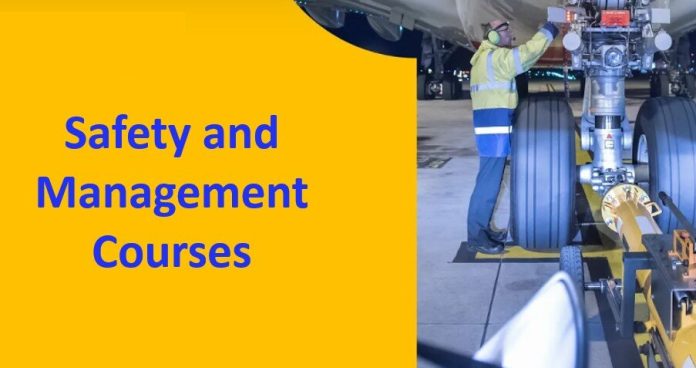Safety is paramount in any workplace, and ensuring a safe environment for employees is a top priority for organizations worldwide. To achieve this goal, many organizations are turning to safety and management courses as a proactive approach to mitigate risks and create a culture of safety. These courses provide a comprehensive foundation for understanding safety protocols, risk assessment, and effective management strategies. In this article, we will explore the importance of safety and management courses, their key components, and how they contribute to a safer and more efficient work environment.
I. The Significance of Safety and Management Courses
1.1. Preventing Accidents and Injuries
Safety and management courses play a pivotal role in preventing workplace accidents and injuries. By providing employees with the knowledge and skills to identify potential hazards and take preventive measures, these courses significantly reduce the occurrence of accidents. In industries prone to high-risk situations, such as construction or manufacturing, investing in safety and management courses is essential for safeguarding both the workforce and the company’s reputation.
1.2. Compliance with Regulations
Regulatory compliance is a vital aspect of any business operation. Non-compliance with safety regulations can result in severe penalties and legal liabilities. Safety and management courses help organizations stay abreast of the latest regulations and standards, ensuring they remain in full compliance. This not only reduces legal risks but also demonstrates a commitment to ethical and responsible business practices.
1.3. Creating a Safety Culture
Safety and management courses not only educate employees about safety practices but also foster a culture of safety within the organization. Employees who are well-trained in safety procedures are more likely to be proactive in identifying and addressing potential hazards. This cultural shift towards safety-consciousness benefits both the organization and its workforce, as it reduces accidents and promotes a sense of responsibility among employees.
II. Key Components of Safety and Management Courses
2.1. Risk Assessment
One of the fundamental components of safety and management courses is risk assessment. Participants learn how to identify potential hazards, evaluate the associated risks, and develop strategies to mitigate or eliminate those risks. Risk assessment is a critical skill for all employees, as it enables them to make informed decisions that prioritize safety in their daily tasks.
2.2. Safety Protocols and Procedures
Courses in safety and management cover a wide range of safety protocols and procedures specific to different industries. These protocols encompass emergency response plans, equipment operation guidelines, and safety measures for various tasks. Understanding and following these procedures is essential for preventing accidents and responding effectively in crisis situations.
2.3. Communication and Reporting
Effective communication is key to ensuring a safe work environment. Safety and management courses emphasize the importance of clear and timely communication regarding safety concerns. Participants learn how to report hazards, near misses, and accidents to the relevant authorities, ensuring that issues are addressed promptly and that lessons are learned from incidents.
2.4. Management Strategies
Safety and management courses are not limited to front-line employees. They also provide valuable insights for managers and supervisors. These courses cover management strategies for promoting safety, such as setting a positive example, leading safety meetings, and implementing safety performance evaluations. Effective leadership in safety management is essential for creating a culture of safety within an organization.
III. Benefits of Safety and Management Courses
3.1. Reduced Workplace Accidents
The primary benefit of safety and management courses is the significant reduction in workplace accidents. When employees are well-trained in safety protocols and risk assessment, they are less likely to make mistakes that result in accidents and injuries. This reduction in incidents not only protects the workforce but also saves the organization money in terms of reduced workers’ compensation claims and potential lawsuits.
3.2. Increased Productivity
A safe work environment is a productive one. When employees feel safe and confident in their workplace, they can focus on their tasks without the distraction of worrying about potential hazards. Safety and management courses help create this sense of security, leading to increased productivity and efficiency in day-to-day operations.
3.3. Cost Savings
Investing in safety and management courses may require an upfront cost, but it can lead to substantial long-term cost savings. Fewer accidents mean fewer medical expenses and legal costs, as well as reduced downtime and operational disruptions. Moreover, companies that prioritize safety are more attractive to potential employees and customers, which can boost revenue and growth.
3.4. Improved Company Reputation
A strong commitment to safety not only benefits employees and the bottom line but also enhances the organization’s reputation. Customers and business partners are more likely to engage with companies that demonstrate a commitment to safety and responsible business practices. This can lead to better business opportunities and increased goodwill in the market.
IV. Implementing Safety and Management Courses
4.1. Needs Assessment
Before implementing safety and management courses, it is crucial for organizations to conduct a needs assessment. This involves identifying the specific safety challenges and requirements within the organization. A thorough analysis will help tailor the course content to address the organization’s unique safety concerns.
4.2. Course Selection
There is a wide range of safety and management courses available, each catering to different industries and roles. Organizations should select courses that align with their needs, industry regulations, and employee roles. Customized courses are also an option, allowing organizations to address specific safety concerns more effectively.
4.3. Training Delivery
Safety and management courses can be delivered through various methods, including in-person training, online courses, and blended learning approaches. The choice of delivery method depends on factors such as the organization’s size, budget, and employee availability. Online courses are becoming increasingly popular due to their flexibility and cost-effectiveness.
4.4. Continuous Evaluation and Improvement
Safety and management courses should not be a one-time endeavor. Continuous evaluation and improvement are essential to ensure that the training remains up to date and effective. Feedback from employees and safety records can provide valuable insights into the course’s impact on safety outcomes.
Conclusion
Safety and management courses are a cornerstone of creating a safer and more efficient workplace. By preventing accidents, promoting a culture of safety, and ensuring compliance with regulations, these courses offer a wide range of benefits for organizations. Moreover, they contribute to cost savings, increased productivity, and an enhanced company reputation. To implement these courses successfully, organizations should conduct a needs assessment, select appropriate courses, and regularly evaluate and improve their safety training programs. In a world where safety is paramount, investing in safety and management courses is not just a choice but a necessity for any responsible organization.





